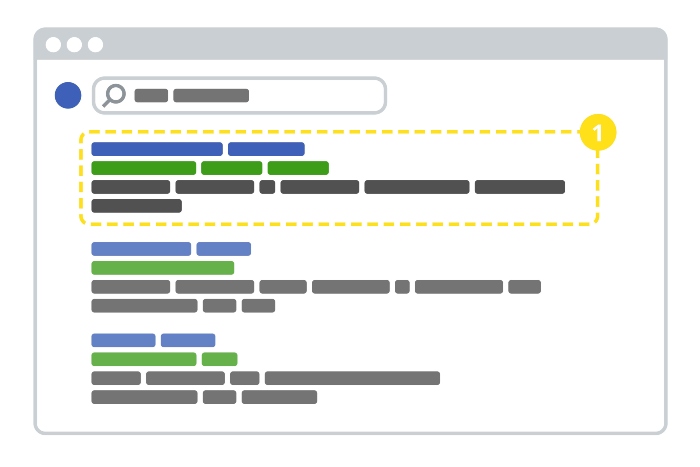Disclosure: This post has affiliate links. I earn a commission at no extra cost to you. I only recommend products I personally believe in. More info on my Privacy Policy page.
Search Intent: What Is It And Why Is It So Important?
Table of Contents
As you may know, Google recently shook up the world of SEO and online marketing this autumn with their ‘Helpful Content Update’. It’s the latest in a very long line of adjustments made to online content writing standards to help readers find genuinely useful information.
Alongside this update, bloggers and business owners everywhere have now had to focus on the concept of ‘search intent’ – but what is search intent, and how might it help you reach more people more frequently?

What is search intent in SEO?
Put simply, search intent is the ‘why’ behind your next visit to Google. Why are you searching today? What do you aim to get out of your search?
Given that we all have access to search engines at our fingertips these days, answers are always just a few taps away. But, for content providers, that means getting a bit smarter on how to read visitors’ minds. How do you meet your target audience’s needs?
To optimise our content to best fit our visitors’ needs, we must map out their journeys (hypothetically, at least).
That means looking closely at associated terms, follow-up questions, and – of course – coming up with the shortest, most information-dense answers to queries people are likely to ask when visiting us.
Where should you start?
Search queries (terms typed into search engines such as Google) and long-tail keyword phrases (longer, more specific search queries) help us to identify where customers may be in their buying journeys. We can also fill in a few of the gaps when it comes to follow-up questions and searches, too.
Don’t worry – managing search intent perfectly is infamously tricky. It’s near impossible to utterly perfect intent optimisation (unless you know each of your visitors personally)!
That said, there are ways we can work search intent to our advantage, and we can start by looking at different types of intent.

What are some of the different types of search intent?
Again, let’s think about why you might be searching today. You may want to find information, compare products, or buy a product.
All of these intent types dictate how we should target our readers, and it’s all about optimising the right phrases and ensuring our SEO is always on point.
Let’s break down these types briefly.
Transaction intent
This is where your customers are ready to buy your products. They’ve done their research and want to know what the best option(s) is for their needs.
With this type of intent, you’d need to produce information-dense and highly specific details about your e-commerce setup.
This is the last part of the sales funnel, which means you’ll need to make your sales copy relevant, informative and truthful. Otherwise, if you are lucky, Google may leave you languishing on page three of the search results.
Navigational intent
So, let’s hop backwards – navigational intent is where your visitors and customers have researched what they want but want to know why you’re the best.
You must establish why your service and/or products stand apart. You can use creative sales writing here, but again, Google loves information-dense sentences that are truthful and genuinely valuable.
It’s all about shortening your visitors’ search journeys. If they can get the answers they want as early as possible, you (and Google) have done a great job.
The short answer is that they are using Google to navigate to something they already know about and understand. Facebook login would be a navigational search, as the searcher knows Facebook and wants to log into their account.
Commercial investigation intent
Similar to transaction intent, commercial investigation intent focuses on the ‘making your mind up’ stage. Potential customers may want to investigate what makes specific products worthwhile.
This stage doesn’t necessarily warrant a purchase from your searcher. If anything, this type of intent helps your buyers to build a bigger picture of what they feel will work best for them. To appeal to this intent, again, information is critical.
Try to answer those hot questions – research the details your competitors offer, and try to provide more precise, detailed responses.
You may not always win this customer, but you can at least assure them that you know what you’re talking about and that you’ve given them enough food for thought to (hopefully) come back.
Information intent
Finally, we’re at the very top of the funnel, the fact-finding intent. This is where searchers will seek authority information on the services you provide. You don’t have to push for the hard sell here (and probably shouldn’t), but you do have to establish yourself as an expert.
You’ll do this by making your content (again) as information-dense as possible and by keeping your language simple and open. Short sentences and paragraphs are also a must.
You should also follow information intent by considering follow-up questions your visitors will likely ask. Look at the ‘People also ask’ section on Google’s first results page for your query.
Could you answer these questions uniquely, briefly, and with confidence?
The aim here is to read the visitor’s mind. If you do, you’ll win their trust and confidence. You may encourage the same visitors to come back to you again and again, driving further custom.
Following search intent is all about ‘winning the snippet’ – that short answer Google highlights at the top of page one. If your answer is concise, relevant and informative enough, you may be the only source your searchers need to turn to. That’s the goal!

How to track search intent (and win more visitors)
The best way to track search intent is, of course, to use Google. You can use an in-depth SERP (Search Engine Results Pages) analyser and work with a talented SEO agency to ensure your content’s always reaching the right people.
Where to begin?
Tracking search intent starts with a basic search for your chosen phrase. What does Google present as their top search results? What type of content gets to the top of page one – are there e-commerce pages, FAQ breakdowns, and sales forms?
You may often find that search intent tracking leads you to highly optimised landing pages. That’s because many business owners and bloggers like you are taking action to win more visitors.

How does Google’s algorithm fit into this?
Google’s algorithm changes are in favour of the searcher. They’re fine-tuning SERPs and the overall search experience so that we actually spend less time searching for what we want, and more time clicking on links that answer our questions right away.
So, don’t be afraid actually to Google your target phrase or a set of keywords. Seeing the search results through your visitors’ eyes should give you a clearer picture of what your own content needs to look like.

What else should you consider?
It’s also vital to consider chasing higher-volume keywords for your main pages and lower-volume long-tail phrases with less competition for your blog posts and category pages.
We must visualise the visitor’s journey like a funnel or an inverted pyramid.
Catch the searcher’s interest with high-volume keywords, then build on this with hyper-specific phrases with lower search volumes.
It’s a careful process that requires support from an SEO expert or two to breed long-term success.
Can I read my customers’ minds?
Unfortunately, mind-reading is a massive part of marketing, no matter how you do it. In SEO, you must always predict how people find you and what you can do to keep them on the page.
It’s easy enough to follow the SERPs and see what content Google is prioritising right now.
However, it isn’t always easy to keep up with this (as well as evolve your content so it always meets Google’s standards).
That’s why it’s vital to contact seasoned SEO experts with years of experience in the trade.
Why get in touch with us at SEO CoPilot Ltd?
At SEO CoPilot Ltd, we’re constantly on the pulse of Google’s latest movements and know what visitors connect with the most. That will always vary from site to site – but we’ll sit down with you and set out a plan of action that sustains you for the months and years to come.
Don’t get muddled by search intent. Call SEO CoPilot Ltd for a quick chat and to set up a free consultation. It’s 01246 556565 – or complete our web form, and we’ll get back to you as soon as possible!
